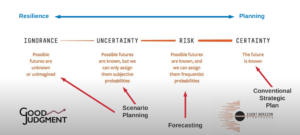Change is ongoing. It is how we manage change that matters!
Supply Variance
European leaders have given themselves sweeping powers to block crucial Covid-19 vaccine shipments beyond Europe. Malaysia placed an export quota on surgical gloves when the implications of increased demand, arising from Covid-19, became clear.
The Goldratt Institute reports that over the past 30+ years, product development increased Lay’s chips from 4 to 60 varieties and Campbell Soup quadrupled their range to about 400 products. That’s changed supply in response to consumer demand.
Australians used to drink ‘local beer’ from their home state. The range now consumed has increased exponentially yet consolidation of manufacturing capacity has become a major industry signature. Manufacturing cost is top quartile in Australia against global $/Litre benchmarks driven primarily by labour and to a lesser degree excess capacity. Once local costs are uncompetitive, manufacturing is offshored. That’s change in response to consumer demand, cost, margin and location.
The Beer Game is a tool simulating information and material flows along a supply chain from production to retail with continuous evolution of inter-organisation configurations challenge traditional concepts with manufacturers operating as nodes of a network of cooperative or competitive suppliers, customers, and specialised functions.
Demand Planning
Covid-19 creates additional demand variance drivers including export quotas, travel restrictions, border closures, less flights, reduced passenger movements, increased freight cost etc.
Demand for Personal Protective Equipment (PPE) and on line purchases have increased beyond any reasonable pre-pandemic forecast. In many cases, Just in Time (JIT) has been replaced by Just in Case (JIC) as health and convenience become priority buying criteria.
Cruises were previously the fastest growing travel industry sector with sales estimated at more than $150 billion/year after demand increased 20.5% in the 5 years to 2019.
COVID-19 negatively impacted demand, revenue and margin. It is now difficult to attract customers. Operators must also pay substantial refunds plus docking fees at ports where ships are quarantined. The Substantial negative flow on consequences to suppliers, in ports previously visited by cruise ships, have become major demand variance drivers.
Demand Planning is forecasting demand for products and services to balance staffing/inventory levels to meet customer needs and meet budget without undue waiting, unproductive staff or Inventory which can be a vital asset to meet customer expectations or a constraint because it cannot easily be converted into cash to improve cashflow.
Demand Planning is not a silver bullet. A pandemic challenges industry leaders to choose their position on a continuum from Ignorance to Certainty.
Source Foresight and Forecasting V Designing for Uncertainty Demand PlanningEmergent Futures Pty Ltd
Increasing Certainty
Certainty is increased by demand planning based on accurate and timely business intelligence.
Certainty is increased by demand planning responding to accurate and timely business intelligence. Not by carving a base roster in stone to become a tombstone!
When demand varies, supply needs to be equally flexible and the increasingly important link between demand planning and an agile digital workforce needs to be better understood.
Agile Digital Workforce
Demand variance requires an agile and informed management response with all components of the workforce performing as a flexible asset and as a source of competitive advantage.
The agile digital workforce has the tools and capability to automate reporting and analyse variance as it occurs to take essential action to match throughput to demand. When data is ‘in the cloud ‘, additional opportunities exist. Previous physical constraints no longer exist!
An effective management response reviews all major supply components including the workforce and other items making up 80% of expenditure. Workforce planning and labour management includes understanding the role, capability, and motivation of the in house workforce, the contingent workforce, and suppliers whether on shore and off shore.
Developing an agile digital workforce includes retention, recruitment, and development of a capable and motivated workforce with access to demand variance business intelligence anywhere, anytime subject to appropriate security controls.
Demand Planning and Workforce Planning Software
What tools enable better demand planning and management of an agile digital workforce? We are happy to outline the many available to match your organisation’s needs to use software as an enabler and integrator.
Want to know more and obtain access to Tools, Techniques, Resources and Case Studies? Join us for the Execbureau Consulting Demand Planning & the Agile Digital Workforce On Line workshop from February 22nd, 2021.


